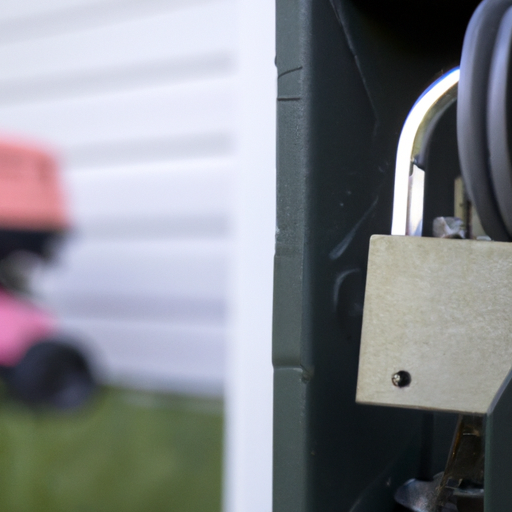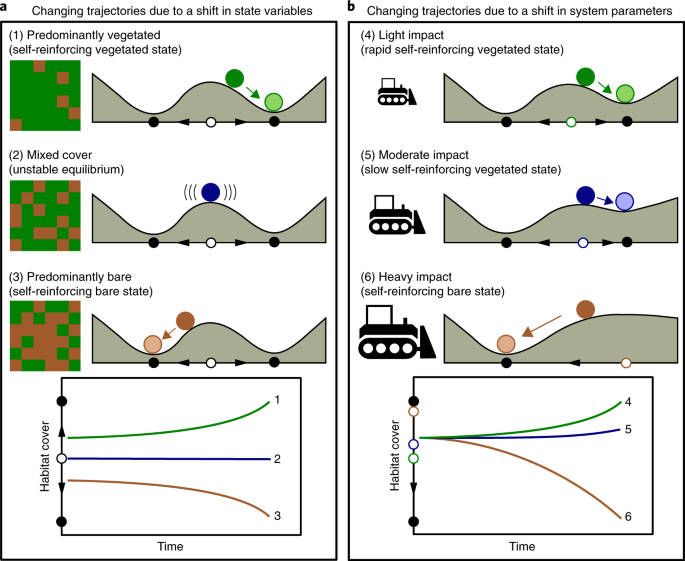Taking proper care of your electric lawn mower is essential for its longevity and optimal performance. One important aspect of maintenance is safely storing it when not in use. To help you keep your electric lawn mower in top shape, this article provides a few valuable tips and guidelines. Whether you’re a seasoned gardener or a novice, read on to discover the best ways to store your electric lawn mower safely.
Choosing a Suitable Storage Location
When it comes to storing your electric lawn mower, choosing the right storage location is crucial to ensure its longevity and safety. Two common options for storing an electric lawn mower are indoor and outdoor storage. Let’s explore the considerations for each option.
Indoor Storage
Indoor storage provides maximum protection for your electric lawn mower. If you have a shed, garage, or any other enclosed space, it can be an ideal location to store your mower. By keeping it indoors, you shield it from harsh weather conditions, such as rain, snow, and extreme temperatures.
Outdoor Storage
If indoor storage is not an option for you, outdoor storage can still be viable as long as you take some precautions to protect your electric lawn mower. Look for a dedicated outdoor storage unit or a mower cover specifically designed for outdoor use. These covers are waterproof and provide protection against sun exposure and other potential damages caused by the elements.
Considerations for Both Indoor and Outdoor Storage
Regardless of whether you choose indoor or outdoor storage for your electric lawn mower, there are a few essential considerations to keep in mind. First, ensure that the storage location is easy to access for routine maintenance or any repairs that may be required. Second, consider the space available. Make sure there is enough room for your mower without it being crowded or at risk of getting damaged by other items. Lastly, keep in mind any specific guidelines or recommendations provided by the manufacturer regarding storage conditions.
Preparing the Lawn Mower for Storage
Properly preparing your electric lawn mower for storage is crucial to maintain its performance and extend its lifespan. Follow these steps to ensure your mower is in top condition for the next mowing season.
Cleaning the Lawn Mower
Before storing your electric lawn mower, give it a thorough cleaning. Remove any debris, grass clippings, or dirt that may have accumulated during previous use. Use a soft brush or cloth to gently wipe down the exterior and clean the underside of the cutting deck. Cleaning your mower not only keeps it looking tidy but also prevents the buildup of corrosive materials that could damage its components.
Removing the Battery
If your electric lawn mower has a removable battery, it is advisable to take it out before storage. Remove the battery according to the manufacturer’s instructions, ensuring that the mower is turned off and disconnected from any power source. This step prevents any potential damage or discharge that could occur while the mower is not in use.
Inspecting and Repairing Damages
Take some time to inspect your electric lawn mower for any damages that may need to be repaired before storage. Check the cutting blades for any signs of wear or damage and replace them if necessary. Inspect the cords, handles, and other parts for any visible signs of wear or deterioration. If you notice any issues, consider getting them repaired or replaced before storing your mower. This proactive approach will help ensure your mower is ready to go when the mowing season rolls around again.
Storing the Lawn Mower
Properly storing your electric lawn mower is essential to maintain its condition and protect it from potential damage. Follow these steps to store your mower effectively.
Properly Securing the Cord
Before storing your electric lawn mower, make sure the power cord is neatly and securely wrapped. Avoid any knots or tangles that could potentially damage the cord while in storage. Storing the cord properly not only prolongs its lifespan but also saves you from having to untangle it next time you need to use your mower.
Positioning the Mower
When storing your electric lawn mower, it is important to position it correctly. Prop the mower up so that its weight is not resting solely on the wheels or blades. This prevents unnecessary strain on these components and helps maintain their functionality. If possible, position the mower in an upright position, using a sturdy support or stand, to save space and protect it from accidental damage.
Covering the Mower
Covering your electric lawn mower is an additional step to ensure its protection during storage. Use a suitable cover specifically designed for lawn mowers or a large tarp to shield it from dust, moisture, and potential pests. Ensure that the cover fits securely and is fastened properly to prevent any unwanted elements from reaching your mower. A well-covered mower will be better equipped to withstand the storage period and be ready for use when needed.
Battery Storage
The battery of your electric lawn mower requires special attention when it comes to storage. Proper battery storage practices help maintain its performance and extend its lifespan.
Choosing an Appropriate Storage Temperature
To ensure the longevity of your lawn mower battery, it is essential to choose an appropriate storage temperature. Most batteries perform best when stored in a cool, dry location. Avoid storing the battery in extremely cold or hot temperatures, as it can negatively affect its overall performance and potentially reduce its lifespan. If you have an alternative storage space with a more constant temperature, consider utilizing it for your battery.
Keeping the Battery Charged or Discharged
Different types of batteries have varying storage requirements. Check the manufacturer’s guidelines or instructions to determine whether it is recommended to store your electric lawn mower battery fully charged or discharged. Some batteries perform better when stored with a partial charge, while others may benefit from being completely discharged. Following the specific guidelines provided by the battery manufacturer will help ensure its optimal performance and longevity.
Avoiding Extreme Temperatures
Extreme temperatures can be detrimental to the overall health of your lawn mower battery. Avoid storing the battery in areas where it is exposed to direct sunlight or near heat sources, such as radiators or furnaces. Additionally, refrain from storing the battery in freezing temperatures that could lead to freezing and subsequent damage. By protecting the battery from extreme temperatures, you can help prolong its lifespan and ensure it is ready for use when you retrieve your mower from storage.
Storing Accessories and Attachments
In addition to the electric lawn mower itself, it’s essential to consider the storage of accessories and attachments. Proper storage of these items ensures their availability and functionality for future use.
Removing and Storing Attachments
If your electric lawn mower has removable attachments, such as bagging systems, mulching kits, or additional cutting blades, remove them before storage. Clean these attachments thoroughly and store them in a separate, labeled container. By doing so, you prevent any potential damage to the attachments and ensure their easy access and functionality when you need them again.
Organizing and Labeling
Maintaining an organized storage system for your lawn mower accessories ensures easy identification and retrieval when needed. Consider using separate containers or labeled bins to store different items. Grouping similar accessories together, such as extra batteries, chargers, or safety goggles, can make it even more convenient when searching for specific items.
Protective Storage for Small Accessories
Smaller accessories, such as nuts, bolts, or spare parts, benefit from protective storage to prevent loss or damage. Utilize small containers, like resealable bags or small plastic bins, to store and organize these items. Keeping them in a designated place within your storage area helps ensure they are readily available when you need them and protects them from being misplaced or accidentally discarded.
Maintenance Prior to Storage
Performing essential maintenance tasks before storing your electric lawn mower helps prevent potential damage and ensures its readiness for future use. Follow these steps to properly maintain your mower before storage.
Drying the Lawn Mower
Before storing your electric lawn mower, ensure that it is dry both inside and out. If your last mowing session involved wet grass, take the time to dry the underside of the cutting deck and any other wet surfaces. This prevents the buildup of moisture that can lead to rust or corrosion during storage.
Sharpening and Balancing the Blades
Well-maintained cutting blades are essential for a successful and efficient mowing experience. Before storing your electric lawn mower, inspect the blades for signs of wear and tear. If needed, sharpen the blades using a suitable blade sharpener or consider taking them to a professional for sharpening and balancing. This step ensures that your blades are in optimal condition when you resume mowing in the next season.
Lubricating Moving Parts
Lubricating the moving parts of your electric lawn mower is an important step to prevent rust and ensure smooth operation. Before storing your mower, apply an appropriate lubricant to the wheel bearings, blade shafts, and any other areas that require lubrication according to the manufacturer’s instructions. This simple maintenance task helps protect the mower’s components and facilitates better performance when you start using it again.
Regular Lawn Mower Maintenance
In addition to maintenance prior to storage, it is essential to incorporate regular maintenance practices into your lawn mower care routine. By following these recommended tasks, you can ensure the longevity and optimal performance of your electric lawn mower.
Cleaning After Each Use
After each use of your electric lawn mower, take the time to clean it thoroughly. Remove any grass clippings, dirt, or debris on the exterior and underneath the cutting deck. Cleaning after each use prevents the buildup of corrosive materials and extends the life of your mower. Additionally, regularly clean the cutting blades to maintain their sharpness, ensuring an efficient and even cut every time you mow.
Routine Inspection and Cleaning of Battery Connections
Regularly inspecting and cleaning the battery connections is essential for ensuring a secure and consistent power supply. Check the battery terminals for any dirt, corrosion, or loose connections. Clean the terminals using a battery terminal cleaner or a mixture of baking soda and water. After cleaning, make sure the connections are tightened appropriately to maintain a solid electrical connection.
Checking Blade Sharpness
Regularly checking the sharpness of your cutting blades is crucial for achieving a clean and precise cut. Inspect the blades for any visible signs of dullness, such as nicks, chips, or frayed edges. If you notice any issues, sharpen or replace the blades as needed. Keeping the blades sharp not only improves the quality of your lawn’s appearance but also helps reduce the strain on the motor and prolongs the battery life.
Safety Tips
When dealing with electric lawn mowers, prioritizing safety is of utmost importance. Follow these safety tips to ensure a secure and hazard-free experience.
Disconnecting the Power
Before performing any maintenance tasks or storing your electric lawn mower, always disconnect the power source. This prevents any potential accidents or injuries caused by unintentional activation. Disconnecting the power also protects you from the risk of electric shock while working on the mower.
Proper Handling of the Battery
When handling the battery of your electric lawn mower, it is crucial to exercise caution. Always follow the manufacturer’s guidelines for handling and storage. Avoid dropping the battery or exposing it to excessive heat or moisture. Mishandling the battery can result in leaks, damage, or even injury. By treating the battery with care, you can ensure its reliability and safety.
Avoiding Water Exposure
Electricity and water do not mix well, so always be cautious of water exposure when using or storing your electric lawn mower. Avoid mowing wet grass or operating the mower in rainy conditions. Additionally, ensure that the storage area you choose is dry and protected from potential water leaks or flooding. Keeping your electric lawn mower and its batteries away from water minimizes the risk of electrical hazards and equipment damage.
Troubleshooting
Even with proper maintenance and care, issues or malfunctions may arise with your electric lawn mower. Here are some common problems you may encounter, along with simple troubleshooting techniques.
Identifying Common Issues
Some common issues that may arise with electric lawn mowers include difficulties starting the mower, reduced cutting performance, or issues with the battery. Identifying the specific problem is the first step toward finding a solution. Assess the symptoms, check the user manual for troubleshooting tips, and follow the manufacturer’s recommendations.
Troubleshooting Techniques
Before seeking professional help, there are some troubleshooting techniques you can try to resolve common issues. Check the power source, ensuring that the cord is securely plugged in and there is a stable power supply. Inspect the battery for any signs of damage or low charge. Clean the cutting blades and make sure they are sharp and balanced. If the problem persists, consult the user manual or contact the manufacturer for further assistance.
Seeking Professional Help
In some cases, troubleshooting techniques may not be sufficient to resolve more complex issues with your electric lawn mower. If you have followed the recommended troubleshooting steps and the problem persists, it might be time to seek professional help. Reach out to a certified technician or a reputable service center authorized by the manufacturer. They will have the expertise and specialized tools necessary to diagnose and repair any issues with your electric lawn mower.
Recycling and Disposal
Proper disposal and recycling of old batteries and electric lawn mowers are essential for environmental conservation and reducing waste. Consider these options for recycling or disposing of your electric lawn mower responsibly.
Proper Disposal of Old Batteries
When your electric lawn mower battery reaches the end of its life, it is important to dispose of it properly. Batteries contain hazardous materials that can harm the environment if not handled correctly. Check with your local waste management facility or recycling center for guidelines on how to dispose of old batteries safely. Many communities have designated battery recycling programs to ensure they are disposed of in an environmentally-friendly manner.
Recycling Electric Lawn Mowers
Recycling electric lawn mowers is an eco-friendly option that helps prevent landfill waste and reduces the consumption of raw materials. Some recycling centers or waste management facilities accept electric lawn mowers for recycling. Contact your local recycling facility to inquire about their specific regulations and procedures for recycling electric lawn mowers. By choosing to recycle, you contribute to a more sustainable future and reduce the environmental footprint of your old mower.
Donating or Selling Used Lawn Mowers
If your electric lawn mower is still in good working condition, consider donating or selling it to someone in need. Many charitable organizations, community programs, or individuals may greatly benefit from a functioning mower. Before donating or selling, make sure to remove and disclose any existing issues or necessary repairs. By passing your electric lawn mower onto someone else, you not only contribute to their convenience but also reduce waste by extending the useful life of the mower.
In conclusion, safely storing your electric lawn mower involves careful consideration of the storage location, thorough preparation before storage, and proper maintenance throughout the year. By following the outlined steps and incorporating regular maintenance practices, you can ensure the longevity, performance, and safety of your electric lawn mower. Additionally, prioritizing safety, seeking professional help when needed, and properly disposing of old equipment contribute to a successful and environmentally-conscious electric lawn mower ownership experience. Happy mowing!





